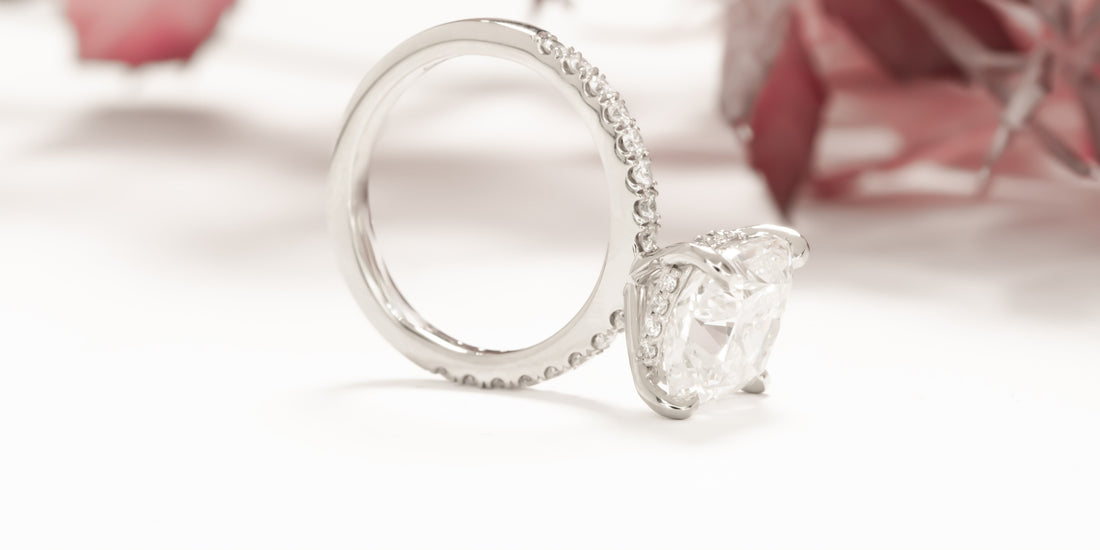

What is a Setting?
An engagement ring's setting refers to the entire ring, specifically how its gemstones are mounted or held in place. The two most crucial components of a ring's setting are the head (or basket) and the shank. The head is the top part of the ring that includes the gemstones, while the shank, often called the band, is the part that encircles the finger.
Ring settings are diverse, each offering unique advantages and disadvantages. Some feature less metal for a light, airy, and elegant feel, while others boast intricate metalwork. Some are designed to be low-profile and highly durable, while others elevate the gem to make it stand out. Regardless of your personal preferences, there's a ring setting that's sure to capture your heart.
Types of Ring Settings
First, let's explore the common methods for securing a gemstone within a ring:
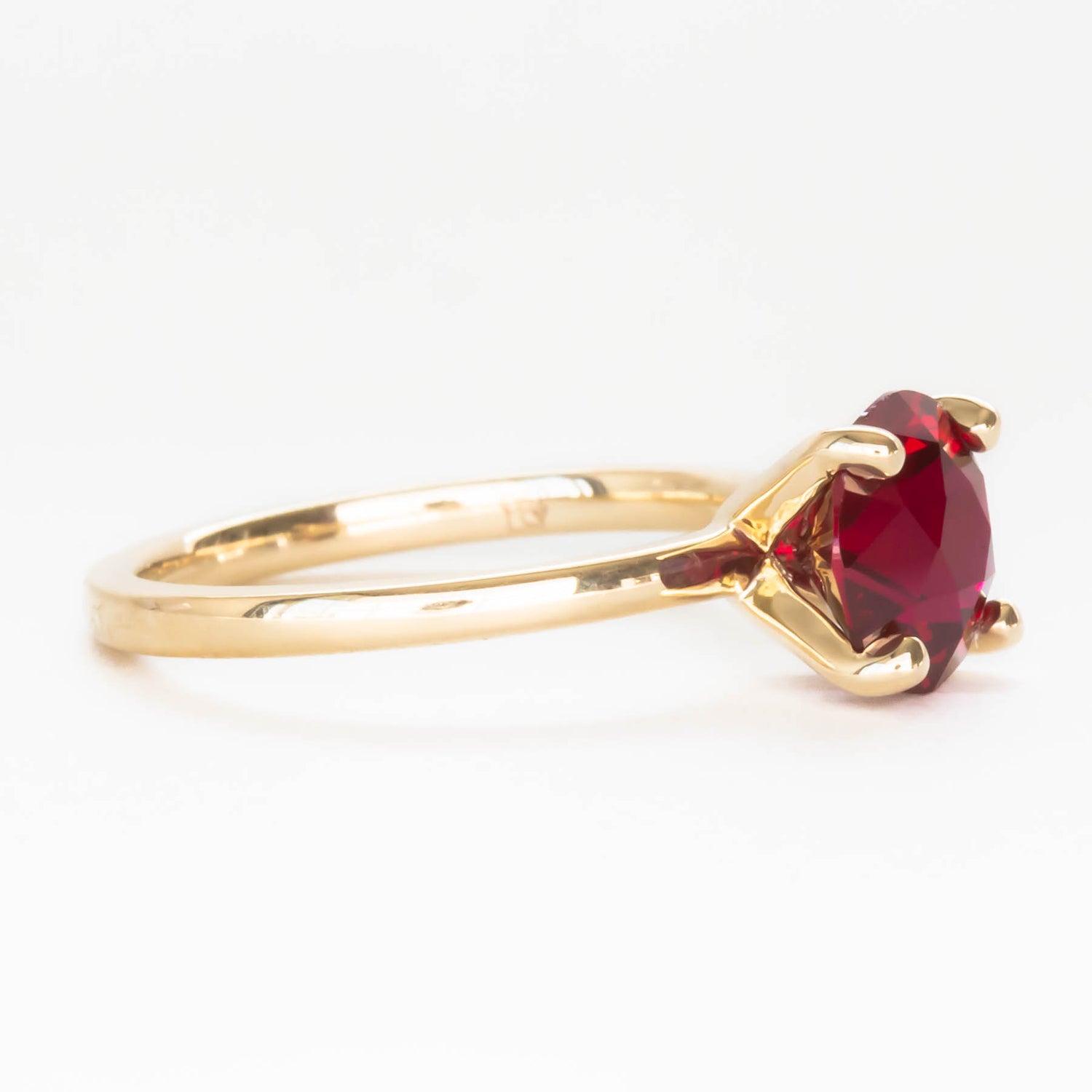
Prong Settings
The prong setting is a classic and widely recognized choice for solitaire engagement rings. It typically features 4 or 6 metal prongs that gently curve over the gemstone's surface to hold it securely. While various prong designs exist, all offer security, with some providing enhanced stability. A key benefit of prong settings is that the strategic placement of the prongs allows for maximum light to enter and exit the diamond, optimizing its brilliance. Prongs also offer versatility in placement.
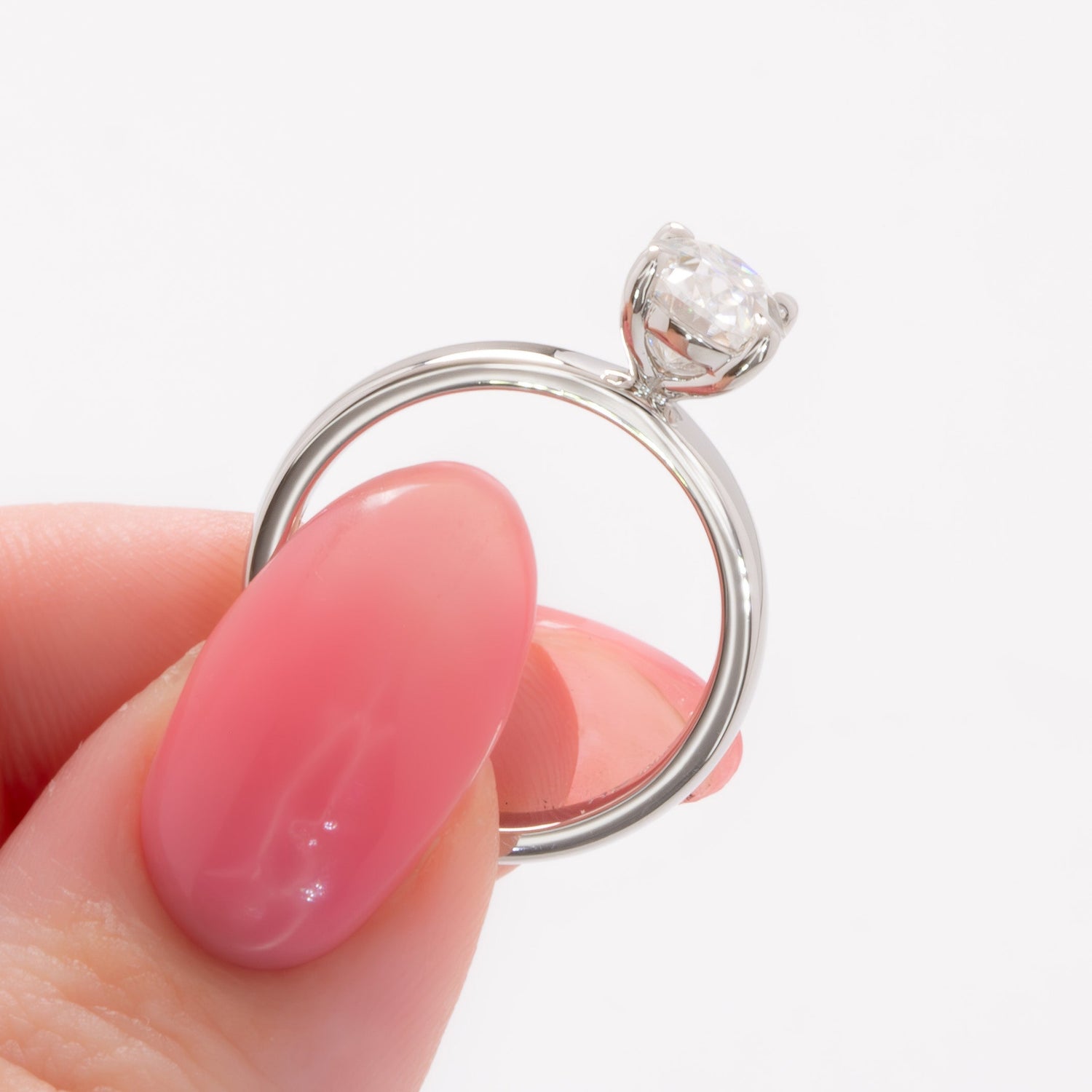
Basket Settings
A basket setting is a variation of the prong setting that incorporates additional structural support. Horizontal bands wrap around the vertical prongs, creating a visual "basket" that cradles the gemstone. Rings with a basket setting typically sit lower on the finger than traditional prong settings, offering increased security and enhanced durability due to the reinforced prongs.

Cathedral Settings
The cathedral setting exudes sophistication and timeless elegance. It features graceful arcs that extend from the ring's shank to the outer mount of the center stone, creating a sculpted appearance inspired by Gothic architecture. The unique elegance of the cathedral setting can accommodate hidden details within the crown of the ring. Furthermore, it's an excellent choice for accentuating the center stone as it allows the ring to sit higher off the finger.
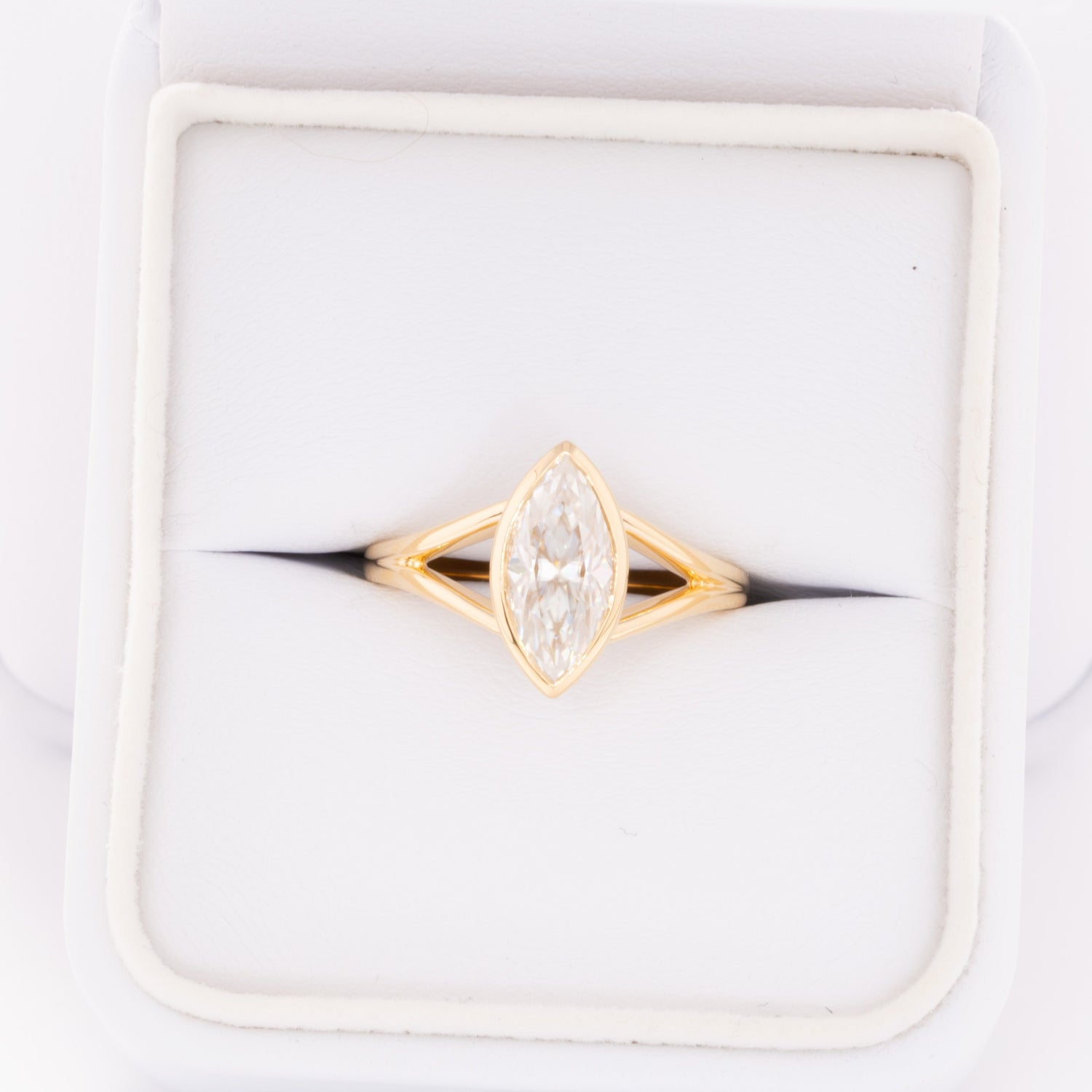
Bezel Settings
The bezel setting is renowned for its exceptional security in holding a gemstone. This contemporary and sleek design encircles the center stone with a thin metal rim, custom-made to tightly secure the stone. Because it's tailored to each stone, any shape and size of center stone can be accommodated with either a full or partial bezel. This setting is ideal for individuals with active lifestyles or professions requiring constant hand use.

Trellis Settings
Often mistaken for the cathedral setting, the trellis setting is characterized by its interwoven or overlapping prongs, forming a distinctive "X" at the base where the mounting connects to the shank. This creates a subtly elegant look, noticeable primarily when viewing the ring from a profile angle. It’s appreciated as a discreet way to add visual interest without drawing attention away from the center stone. However, similar to the cathedral setting, the trellis setting can accumulate dirt and debris in its small crevices, requiring more effort to keep clean.
Types of Ring Design Elements
While referred to overall as "ring settings," there are many design elements involved, and can be combined into many different variations!

Halo
The halo ring setting features a central gemstone encircled by a ‘halo’ of diamonds. This design enhances the stone's appearance and overall sparkle, creating an ethereal and romantic look with significant visual impact. Halos can be subtle, like hidden halos where diamonds are placed beneath the center stone, or more dramatic, such as double halos or vintage-inspired sunbursts. This versatile setting can be integrated with various mounting types, including prong, basket, cathedral, and trellis settings.

Pavé
Pavé, a very popular setting method, involves meticulously fitting tiny gems into holes so they sit flush with the ring's surface. This creates a dazzling effect, reminiscent of a road "paved" with diamonds, hence the French name. The pavé setting beautifully complements any center gem, adding visual impact without detracting from the centerpiece. It can also serve as a decorative accent, highlighting other gemstones or metalwork like filigree or milgrain.

Solitaire
A solitaire setting features a single gemstone mounted on the ring's head, complemented by a simple metal band. Narrower bands can make the stone appear larger and suit smaller fingers, while thicker bands offer more diamond setting options. Though prong or basket settings are most common, a solitaire can be achieved with various ring setting types.

Three Stone
A three-stone ring showcases a larger center stone flanked by two slightly smaller, equally sized stones that complement its shape. The center stone is typically set in a raised mounting, drawing visual interest to it, while the flanking stones serve as accents. This versatile setting is popular for its incredible sparkle and allows for the inclusion of color with sapphire, ruby, or emerald side stones.

Two Stone
Also known as 'Toi et Moi', this design features two gems in either complimentary shapes or two vastly different shapes. 'You and Me' is the perfect name for this style and can showcase a huge variety of combinations.
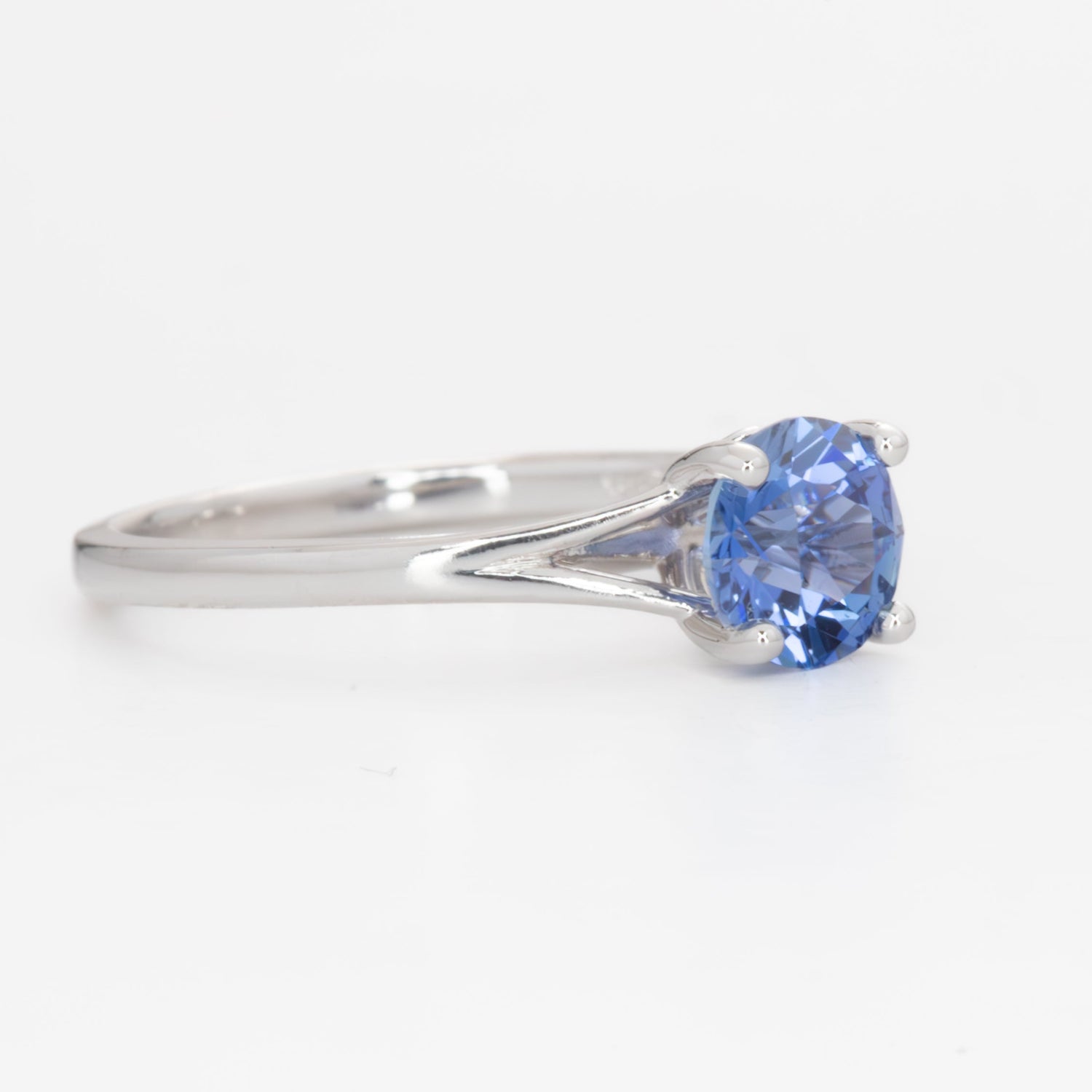
Split Shank
Unlike most traditional engagement rings with a single band, split shank rings feature a more elaborate design where the band divides into two separate shanks around mid-finger. These shanks progressively widen as they approach the center stone at the ring's head. This unique and unexpected look enhances the center stone, making it appear larger.

Bypass
This style of setting is visually stunning and can include a prong setting or half bezel. Rather than the traditional 'straight' band, the shank offers an offset shank where the band appears to not connect, rather the center gem appears to float between.
How to Pick Your Setting
Selecting the ideal setting involves considering your chosen center stone, personal style, and daily habits.
Factors to Consider When Choosing
Security and Durability
- Prongs: While most traditional diamond engagement rings use 4 prongs, a 6 prong setting offers enhanced security for larger gems. Our Signy Ring exemplifies a secure 6 prong setting for an oval.
- Lifestyle: For active individuals or those who use their hands frequently, low-profile settings like a bezel provide greater protection against bumps and snags. Our Aisha Ring is a great choice for active lifestyles.
Maximizing Gem Appearance
- Halo Settings: A halo of smaller diamonds surrounding your center gem and make it appear larger. Adding another halo can further accentuate the look, like our Sabela Ring.
- Three Stone Rings: These settings cover more surface area on the finger, making gems seem more substantial. The shapes of the accents can also add intrigue, such as the 'bullet' cut lab diamonds of our Felicity Ring.
Enhancing Sparkle
- Pavé Band: This band features small diamonds along the shank, adding brilliance from every angle.
- Solitaire with Prong or Cathedral Setting: Lifting the center gem maximizes light return, resulting in increased sparkle. Our Serene Ring is a great choice for those looking to 'showcase' their gem.
Once you've narrowed down your preferences based on these factors, consider the practical aspects of maintenance and how you envision pairing your ring with a wedding band to find your perfect setting.
